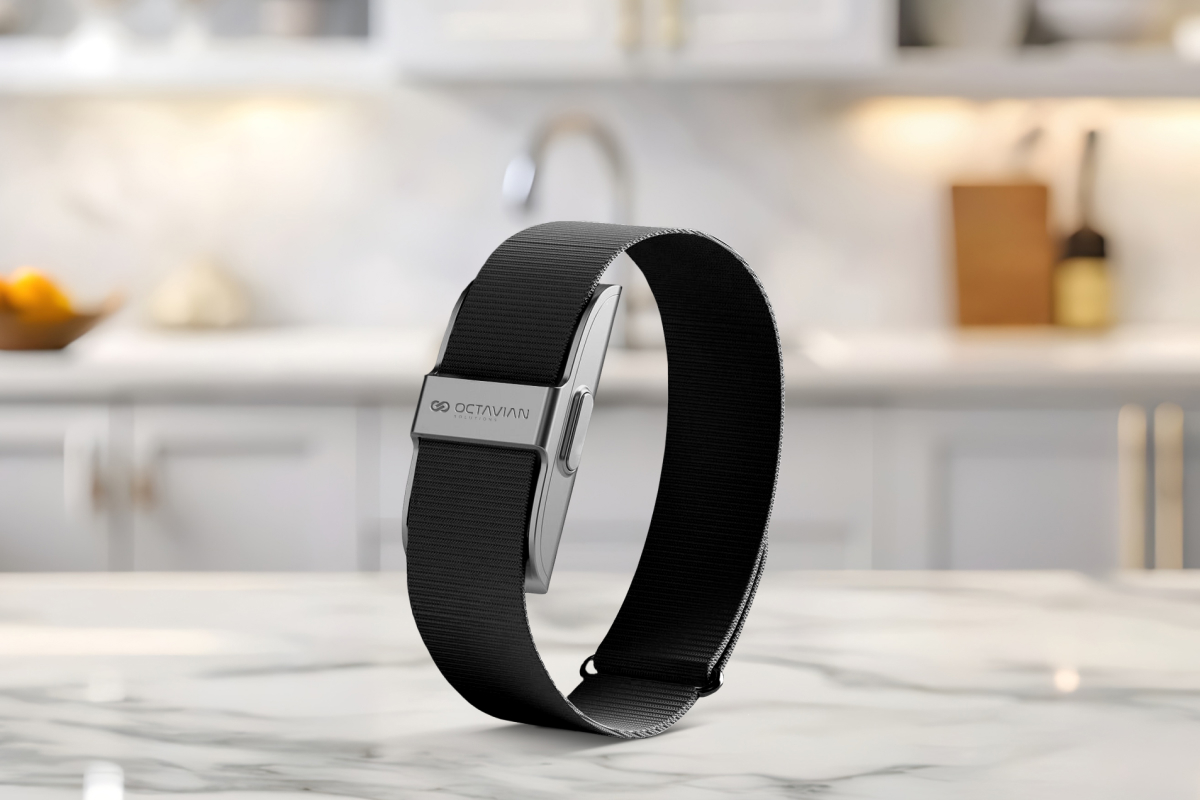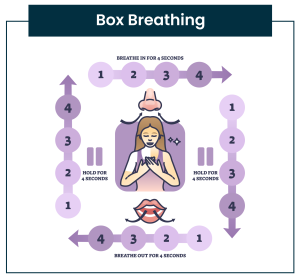Welcome to the age of wearable health trackers! These nifty devices have revolutionized the way we monitor our well-being, providing real-time data on steps, heart rate, stress levels, heart rate variability (HRV), and sleep patterns. But what does it all mean—and how can these insights help improve your health?
Tracking your health with wearables is like having a personal assistant on your wrist. Whether you’re aiming to boost fitness, manage stress, or keep blood sugar levels in check, these devices offer valuable insights that can guide you toward a healthier future.
Measuring Steps
Think of tracking steps like monitoring a car’s mileage. It’s no surprise that regular physical activity—like walking and daily movement—is essential for maintaining a healthy weight, boosting cardiovascular health, and enhancing overall well-being. Understanding your baseline step count makes it easier to set realistic goals for gradual increases—say, 500 to 1,000 steps more per day.
With the Bioband and the myTula app, you can see your step count each day. As you reach each new milestone, your goal can increase by another 500 to 1,000 steps until it becomes second nature. This steady increase in daily steps can lead to improved insulin sensitivity, helping to regulate blood sugar levels (13).
Did you know that a simple 15-minute walk after a meal can significantly improve blood sugar management—while also boosting your daily step count?
| Suggestion | Description | Estimated Increase in Steps |
|---|---|---|
| Take the Stairs | Opt for stairs over elevators or escalators. | 200-300 steps |
| Park Further Away | Park at the far end of parking lots. | 100-200 steps |
| Walk During Breaks | Use breaks at work to take short walks. | 300-400 steps |
| Walk and Talk | Take phone calls while walking around. | 200-500 steps |
Heart Rate Monitoring
Monitoring your heart rate with a wearable is like having a personal health radar. It offers valuable insights into your cardiovascular health, helps you better understand your fitness levels, and can even detect potential issues early on.
Tracking your heart rate during exercise also adds another layer of insight—particularly into how effectively your workouts are improving insulin sensitivity. Here’s how:
- Intensity and Energy Use: During exercise, your heart rate rises, signaling how hard your body is working. Both high-intensity workouts and resistance training are known to improve insulin sensitivity. Intense exercise, including weightlifting, stimulates the production of GLUT-4—a protein that helps cells absorb glucose. Strength training also builds muscle mass, which boosts glucose uptake over time, even at rest (14).
- Optimal Heart Rate Zones: Monitoring your heart rate ensures you’re training in the optimal zone for your goals. For example, Zone 2 training can help with fat burning and is often recommended when starting out to improve insulin sensitivity. In this zone, you begin to build endurance and extend your capacity for longer workouts (15). Read HERE to learn more about the benefits of exercising within your heart rate zones.
- Consistency and Progress Tracking: Regularly tracking your heart rate during workouts provides a clear picture of progress. As your fitness improves, your heart rate may lower for the same amount of effort—a sign of improved cardiovascular health and enhanced insulin sensitivity (16).
Heart Rate Variability (HRV)
HRV, or heart rate variability, measures the time between heartbeats—like checking the rhythm of an orchestra. While there’s no one-size-fits-all range for HRV, generally, a higher number is considered better. A higher HRV indicates that your body is more resilient to stress and is associated with improved insulin sensitivity (17–18).
By monitoring your HRV, you gain insight into how well your body is recovering from exercise and adapting to increased physical activity. This can help support more efficient blood sugar management.
Note: If your wearable tracks HRV, your Tula dietitian may use this data—along with readings from your glucometer and Bioband—to tailor recommendations specifically for you.
Stress Levels
HRV is also a key factor when wearable devices track stress. Although they may not label it explicitly as HRV, many use it as a “stress thermometer” to quantify how much strain the body is under. HRV measures the time between each heartbeat and reflects the balance between the “fight or flight” and “rest and digest” branches of your nervous system. Typically, a higher HRV indicates a relaxed state, while a lower HRV can suggest elevated stress levels (17–18).
When you’re stressed, your body releases cortisol, a hormone that can raise blood sugar levels. By monitoring HRV, wearables can help detect when you’re under stress. This real-time feedback empowers you to take proactive steps—such as using relaxation techniques, doing light exercise, or practicing mindfulness—to reduce cortisol and help keep your blood sugar stable (19).
For instance, if your wearable detects a drop in HRV (a sign of increased stress), it might prompt you to take a few minutes for deep breathing, a guided meditation, extra hydration, or even suggest prioritizing more sleep that night (17–18). A consistently declining HRV trend can be a useful signal that it’s time to evaluate and reduce stress in your life. Making small changes over time can improve how you handle stress and help keep your blood sugar stable.
By identifying and addressing high-stress periods, you can build a more balanced lifestyle that supports both overall health and better blood sugar regulation.
Sleep Patterns
Getting good sleep is like recharging your body’s battery—and it’s essential for maintaining overall health. Wearable health trackers can monitor both the quantity and quality of your sleep, providing valuable insights into individual sleep habits. This is important because poor sleep is linked to insulin resistance and elevated blood sugar levels (20). Sleep trackers, like your Bioband, can also reveal potential signs of an undiagnosed sleep disorder.
When the quantity or quality of sleep is compromised, the body produces more cortisol, a stress hormone that can raise blood sugar levels. Inadequate sleep also reduces insulin sensitivity, making it harder for your cells to absorb glucose from the bloodstream (20). This can result in higher blood sugar levels and an increased risk of developing diabetes. In fact, one study showed that even a single night of partial sleep deprivation can reduce insulin sensitivity by up to 25% (21).
By using wearables to track sleep, you can identify patterns and make informed changes to improve sleep habits. This might include setting a consistent sleep schedule, creating a calming bedtime routine, and avoiding stimulants like caffeine before bed. Getting adequate rest can help lower cortisol levels and improve insulin sensitivity, leading to more stable blood sugar levels (20).
Sleep is one of the most powerful and fundamental tools for health—if its countless benefits came in supplement form, it would be impossible to keep on the shelves.
Finding What Works for You
Understanding and tracking which areas of your health need attention allows you to create a personalized wellness plan. For instance, if stress levels are elevated, incorporating stress-reducing practices like box-breathing or meditation can be helpful. If sleep patterns are inconsistent or poor, focusing on sleep hygiene and establishing a regular sleep schedule can make a meaningful difference. Read HERE to learn more about improving sleep.
By addressing these key areas, you can enhance your overall well-being and gain better control over your blood sugar levels. Remember, small, consistent changes can have a big impact—and taking charge of your health is a powerful step toward a happier, healthier you!
Sending Health Your Way!
The Tula Clinical Team
Austin MS, RDN, CSR, LDN, CD
Aubree RN, BSN
Tula Takeaways |
|---|
| 1. Track Your Progress: Choose a measurable health indicator—like sleep quality, daily steps, heart rate, or blood sugar—to start monitoring. This will help you understand your baseline and identify areas for improvement. |
| 2. Overcome Obstacles: If wearing your tracking device is challenging, think about what’s getting in the way. For example, if you often forget to charge it, try placing your charger next to your phone or keeping a spare at the office. |
| 3. Share What You Discover: We’d love to hear what you learn about your body’s trackable trends. |
The LIVE TULA blog is informational and not medical advice. Always consult your doctor for health concerns. LIVE TULA doesn’t endorse specific tests, products, or procedures. Use the information at your own risk and check the last update date. Consult your healthcare provider for personalized advice.







